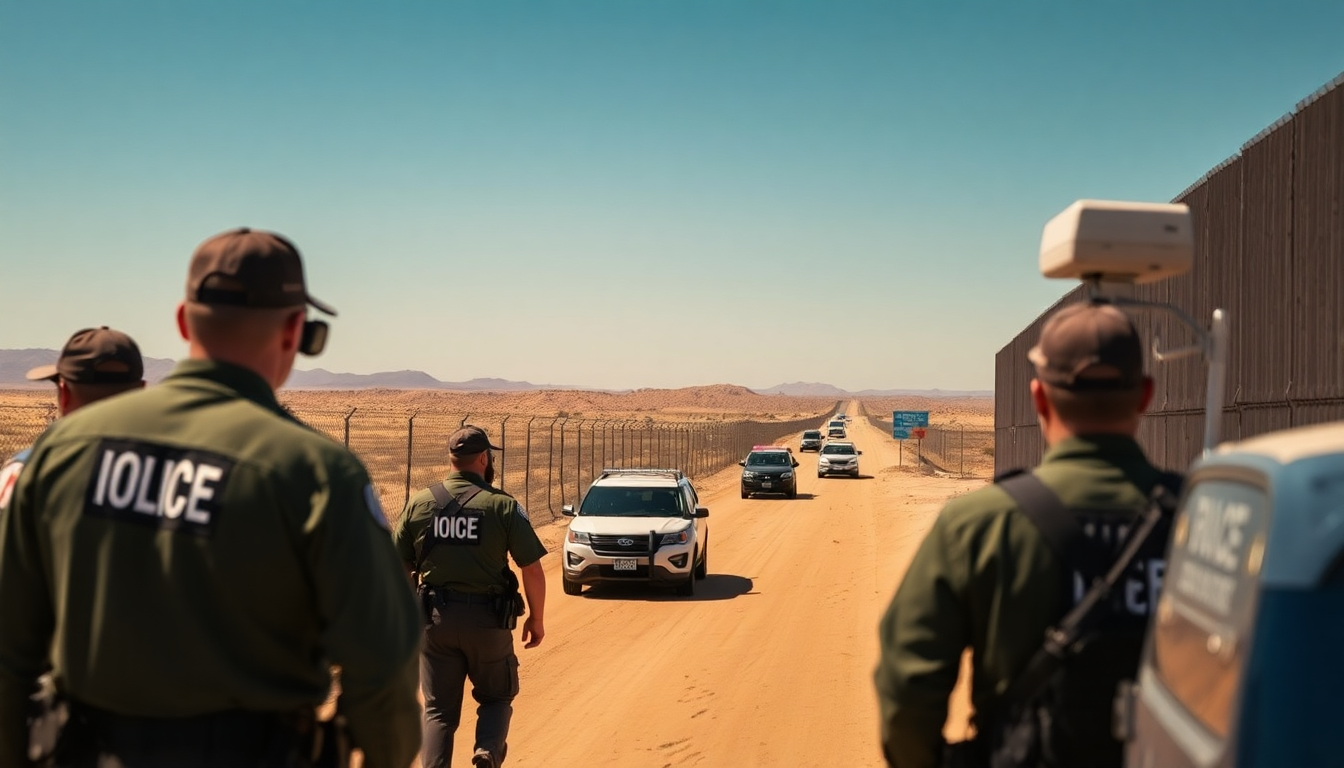Table of Contents
The recent signing of President Trump’s extensive immigration funding bill has stirred up quite a conversation about what it means for border security and enforcement. With a whopping $30 billion earmarked for Immigration and Customs Enforcement (ICE), this legislation is all about ramping up the administration’s efforts against illegal immigration.
Republican lawmakers are celebrating this funding boost as a major win, highlighting its potential to enhance border security and implement targeted enforcement strategies. But what does this really mean for everyday Americans?
The Financial Landscape of Immigration Enforcement
At the heart of this new legislation is that almost $30 billion allocation to ICE.
This funding isn’t just a number; it’s a game-changer aimed at strengthening various aspects of immigration enforcement. We’re talking about hiring more agents and investing in advanced technology to help with monitoring and enforcement. And don’t miss the $45 billion set aside for detention facilities, which is crucial for processing and holding individuals suspected of illegal immigration.
Representative David Kustoff from Tennessee has made it clear: this funding aligns with the administration’s commitment to tightening national borders, especially with the 2024 elections on the horizon. So, how will this affect the communities involved?
On top of that, the bill backs substantial investments for border wall construction—a key priority for the Trump administration.
This financial support is viewed as essential for implementing effective border security measures. Lawmakers are convinced these enhancements could be vital in tackling the ongoing issues of illegal immigration and associated criminal activities. But is building a wall really the answer?
Targeted Enforcement Strategies and Public Sentiment
As the conversation around immigration policy evolves, there’s a growing focus on targeted enforcement. Representative Michael Guest has been vocal about prioritizing the apprehension of individuals with criminal backgrounds or those who threaten public safety. This approach resonates with many Americans who want reliable measures to ensure dangerous individuals are removed from their neighborhoods.
But what about the impact on families and communities?
Critics of the administration’s strategy are raising red flags about potential overreach and the implications for vulnerable populations. Striking the right balance between enforcement and protecting those in need is a hot-button issue. As ICE gears up to use these newly allocated funds, the focus on targeted operations might reshape how citizens view the agency’s role in their communities. Are we prepared for such changes?
Moreover, the discussions around ICE’s budget reflect broader concerns about how immigration enforcement intersects with public safety. The recent push for funding aligns with a growing sentiment among lawmakers who argue that effective immigration policy is crucial for tackling various socio-economic challenges, including the ongoing drug crisis affecting many regions of the United States. How do these factors play into the daily lives of those affected?
Legislative Outcomes and Future Implications
The recently passed legislation, which has now received presidential approval, marks a significant move forward for Trump’s immigration agenda. Beyond border security funding, the bill also extends key elements of the 2017 Tax Cuts and Jobs Act and rolls back certain green energy subsidies introduced during the Biden administration. These multifaceted changes highlight a broader economic strategy, all while reinforcing the administration’s commitment to immigration reform. But what does this mean for the future?
As we look ahead, the implications of this funding on immigration policy will continue to unfold. With the potential for increased enforcement measures and a focus on targeted operations, we might be setting the stage for future legislative efforts. Observers will be keeping a close eye on how these developments influence public perception, community relations, and the overall effectiveness of immigration enforcement in the coming years. Are we ready for what lies ahead?
In conclusion, this comprehensive funding bill marks a pivotal moment for the Trump administration’s immigration policies. By prioritizing border security and targeted enforcement, the legislation aims to tackle urgent concerns surrounding illegal immigration while aligning with the administration’s broader political agenda. What do you think this means for our future?





